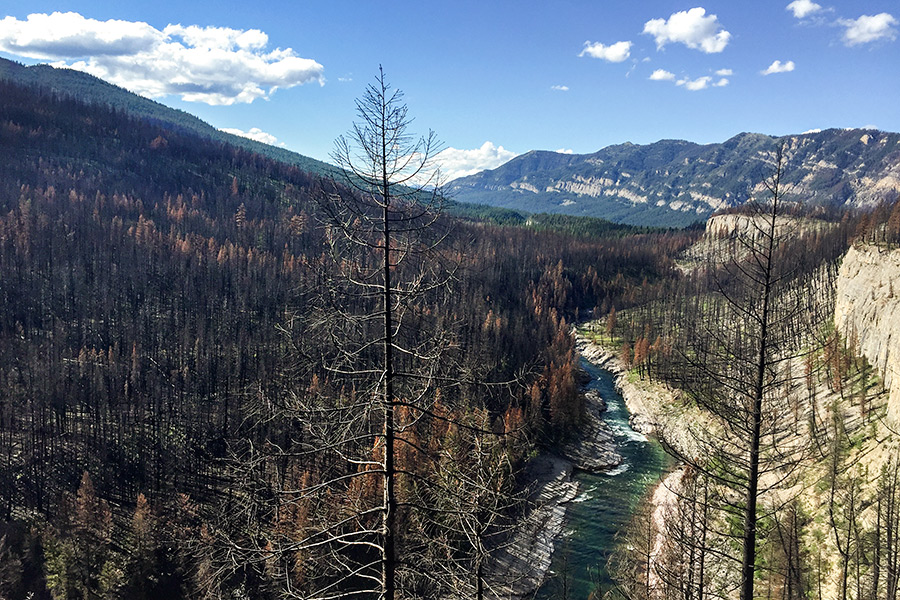Year After Historic Summer, Managers Expect Average Wildfire Season
Recent rain helps keep fire conditions low but warm weather could quickly dry fuels
By Justin Franz
A rainy summer weekend is rarely something to celebrate but it was a welcome sight for Flathead County Fire Service Manager Lincoln Chute.
A year after a historically dry spring and wildfire-filled summer, fire managers are preparing for what they believe will be an average season in Northwest Montana.
“Compared to last year things look fabulous,” Chute said, referencing the recent rainfall across the region.
Last year, 15,000-square-miles burned nationwide, including more than 225,000 acres in Northwest Montana, making it the region’s worst fire season in a decade. A year ago this week, the first major blaze of the year, the Glacier Rim Fire, was already raging along the North Fork of the Flathead River.
Kalispell has received 1.34 inches of rain this month, considerably more precipitation than last year but still below the annual June average by .93 inches.
Manny Mendoza, Flathead National Forest assistant fire manager, said an influx of rain doesn’t mean the region is out of the woods yet.
“All this rain can give a false sense of security. We can definitely still have a fire season. It may not be as smoky as last year but it can still happen,” he said. “A lot can happen between now and the end of July. We’re really happy to see all this rain, but we’re not out of a fire season yet.”
Fire managers on the Kootenai National Forest said they are seeing similar conditions in Lincoln County, but they are still worried about the potential for big fires.
Dan Rose, fire management officer for the Kootenai National Forest, said last year was the first time in more than a decade that they had large wildfires on the landscape and that there is a lot of fuel left to burn in the forest.
“If we get moisture in July, that will really mellow things out but if not we could have a big season,” he said. “We’re mostly just waiting to see how things play out.”
Chute said he is especially concerned about the heat wave that is expected to hit the region this week. He said warm temperatures could quickly dry out fuels and at that point it would only take a spark to start a fire. Chute urged people to be cautious going into the holiday weekend, especially if they’re going to use fireworks. If you plan on lighting fireworks on your own property, Chute said you should wet the grass a day or two in advance so that it doesn’t catch on fire. He also encouraged people to clean out their gutters because dry needles can quickly ignite.
“Go out and have a safe and fun Fourth of July,” Chute said. “But just be cautious and use common sense.”